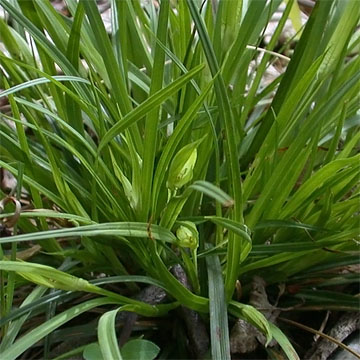

Carex backii - (image 1 of 6)
Taxonomy
Family: Cyperaceae
Section Phyllostachyae
Habitat
Dry, rocky woods and thickets, in acidic or calcareous soils. Rare in NY where it occurs mainly in limestone woodlands in the northern part of the state.
Associates
Distribution
Quebec to NJ, west to MN, NE, British Columbia, OR, and UT.
Morphology
Tufted perennial 5-30 cm; primary leaves 3-6 mm wide; staminate scales mostly 3, the margins connate to above the middle; pistillate scales green, wider than and nearly concealing the perigynia, the lower elongate and leaf-like, (1.5-)2-7 cm, the upper progressively reduced but still surpassing the perigynia; perigynia 2-5, turgid, rounded-trigonous, faintly nerved, 4-5.4 mm, rhombic-ovoid and obscurely beaked to subglobose or obovoid and with a smooth or obscurely serrulate beak to 2 mm; achene without a stylar apiculus.
Notes
Fruiting late May to early July
Wetland indicator: NA
An interesting sedge in that the bracts subtending the perigynia are large and leafy, giving the spikelets the appearance of a greenish flower.
References
Gleason, Henry A. and A. Cronquist. 1991. Manual of Vascular Plants of
Northeastern United States and Adjacent Canada. Second Ed.
The New York Botanical Garden. Bronx, NY
|
© Michael Hough 2018 |